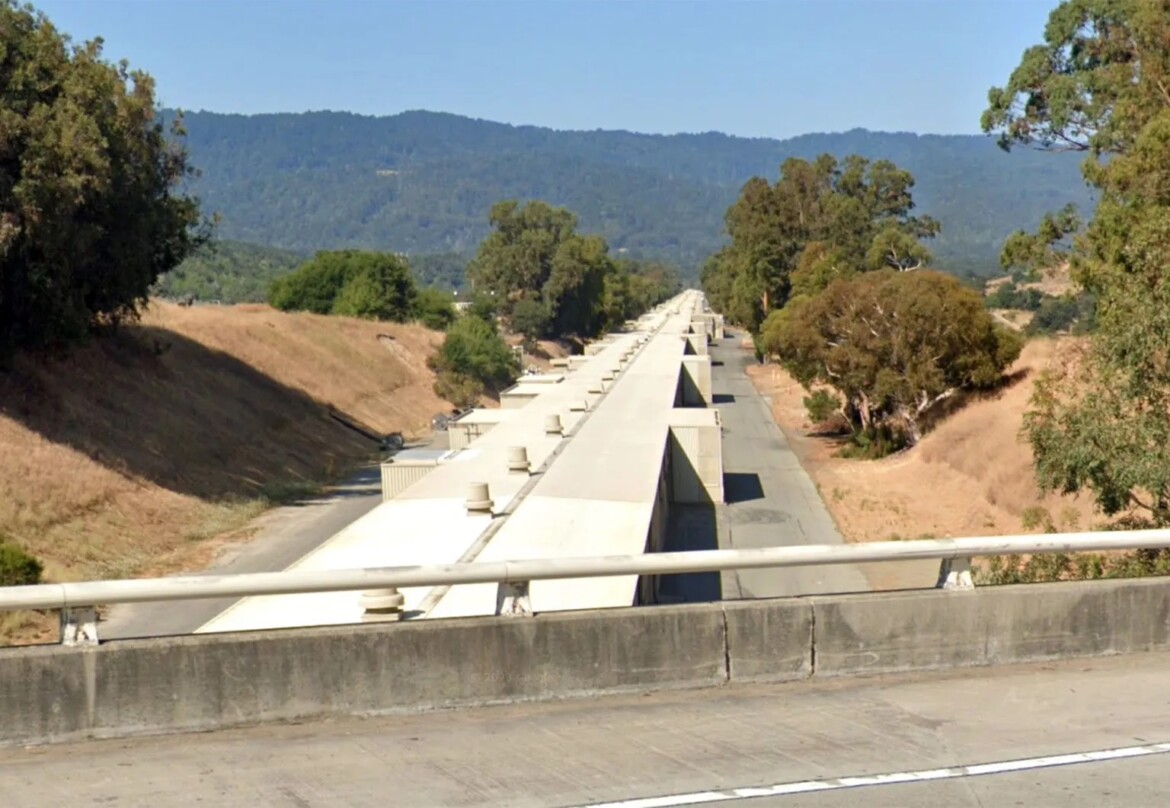COME VISIT THE SLAC National Accelerator Laboratory (usually called SLAC), on the edge of the Stanford University campus, to learn about the inner workings of its 2-mile-long accelerator, which is used to smash atoms and now makes new discoveries about the universe.
SLAC’s accelerator is so long that it crosses under Interstate 280. It touts itself as the longest modern building on earth and from the outside, it looks like a long storage container heading toward the Santa Cruz Mountains.
The lab is funded by the U.S. Department of Energy and run by Stanford. SLAC has over 1,600 employees, including 60 members of Stanford’s faculty and many graduate students.
The underground accelerator was built in the 1960s to do research on particle physics. Several Nobel Prizes in physics and chemistry have been awarded for research that was conducted there. Today, SLAC’s research goes in many directions and takes place in modern buildings that would look at home in nearby technology business parks.

Much of SLAC’s research involves X-rays and high-speed systems. Tour guides here wear radiation badges, and numerous signs near the accelerator warn of radiation. One sign reads “Caution Radiation Area when Klystron is energized.”
But “nothing you see will be hazardous,” said tour guide Emma Cuddy, a Stanford graduate student. Since X-ray radiation dissipates quickly in the air, visitors get less radiation than at an airport or from a microwave oven, she explained.
Over the hills and far away
SLAC covers 426 acres, starting near Sand Hill Road in Menlo Park and extending into the rolling hills behind Stanford along I-280. Sand Hill Road is well known as the location of the offices of Silicon Valley venture capital firms.
The public is allowed to visit SLAC on several monthly guided tours, or people can attend sponsored lectures or come to a STEM Community Day in the fall.
TERMINOLOGY
- DIPOLE CORRECTOR: A specialized magnet used in particle accelerators to precisely steer the path of a particle beam by creating a magnetic field to correct for deviations from the desired trajectory.
- DARK MATTER: In astronomy, an invisible and hypothetical form of matter that does not interact with light or other electromagnetic radiation.
- SUPERCONDUCTING ACCELERATOR: A particle accelerator that utilizes superconducting radiofrequency (SRF) cavities to efficiently accelerate charged particles to high energies, enabling the generation of powerful beams in relatively short distances.
— AI generated definitions
It helps to know a little about physics before visiting SLAC, and to be familiar with terms like superconducting accelerator, dark matter, or dipole corrector. And to appreciate that microwaves generated at SLAC “accelerate electrons to nearly the speed of light,” as one exhibit describes the process. Tour areas are well-marked with signs and exhibits that explain these concepts.
While physics is often associated with top-secret nuclear research, that’s not the case at SLAC. “Nothing we do here is classified,” Cuddy said at the start of a recent guided tour that she led with graduate student Paris Franz. In recent years, SLAC research moved away from particle physics and into other research areas like photon science and astroparticle physics.
Guided bus tours at SLAC last about 90 minutes. Visitors watch an introductory video, then visit the accelerator and a research lab.
Tour guides explain how the accelerator is powered by 240 klystron tubes that generate microwaves.
The sound of science
The accelerator itself is housed in a covered building and is basically a long copper pipe with a concrete stabilizer underneath. Visitors are offered earplugs because of the noise it emits, comparable to loud fluorescent lights.
Tour guides explained that one recent project done by scientists at SLAC was to build a large digital camera for a 10-year survey of the universe, which was installed in a telescope in Chile.

Private companies are also allowed to use SLAC’s facilities for some studies, including the Rolls-Royce company that did research on jet engines, Cuddy said.
Who visits SLAC? “We get all kinds of people,” said Kathryn Olsen, a STEM outreach and event assistant. “Science nerds, people who used to work here, and people who find SLAC on the map and who want to know more.”
The post Guided tours of Stanford’s SLAC accelerator offer visitors a light-speed peek at science appeared first on Local News Matters.
